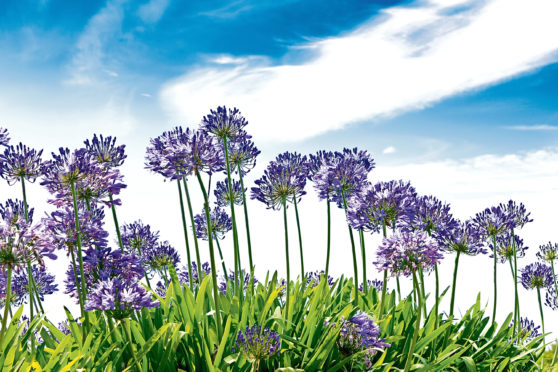
Our gardening expert, Agnes Stevenson, is in pruning mood this week and is hoping to find some yew cuttings to grow a hedge in her garden…
It’s that time of year when I give the fir tree that goes by the back door its annual trim. We inherited the tree when we moved here and, left to grow unchecked, it would become a giant, but by removing the lead shoot and thinning out its skirts every summer, I’ve kept it to an acceptable height.
The key when pruning all conifers is to start when they are young and not let them get out of hand because pruning into the brown wood that lies beneath the green outer growth will, in most cases, kill them.
The exception to this rule is yew, which will regenerate if cut back hard, although if I had a cherished yew hedge I don’t think I’d risk scalping it all at once but instead would stagger the job over several years to prevent it from going into shock.
I don’t have a yew hedge, but I’d like one, so this autumn I plan to take cuttings from the yew trees that grow in the woods around here. Yew were often planted at sacred sites and I don’t know if any of those that grow around here have historical significance or are just chance arrivals dropped as seeds by birds.
Some years ago I visited an exceptional topiary garden on the west coast which had at its centre a twin row of golden yews, clipped into crisp cones. The effect was magical but the owner told me that the golden yews were a mistake.
He’d raised the plants himself from 1,000 cuttings taken from nearby trees, but once out from under the shadow of the woodland, the young plants had developed the golden colouring that had been suppressed in the donor trees because they grew in such high levels of shade.
Golden yew and other similar evergreens come into their own during the winter months when there’s not much colour around but at the moment there’s no shortage of bright tones in the garden, from inky-blue agapanthus flowers to the fiery dragons’ heads of Crocosmia ‘Lucifer’. The flower spikes on Veronica spicata ‘Red Fox’ are electric pink and if my hydrangeas hadn’t been caught by a late frost, then their bracts would be adding a dash of blue, purple and mauve. As it is, the few heads that survived the cold snap are mostly still green.
While the flowers on hydrangeas can be vulnerable to low temperatures, the plants themselves are hard to kill and in my last garden I had several that were almost 50 years old. This may seem a venerable age for a plant, but it’s just a blink in the eye compared to the lifespan of a yew – it can be 1,000 years or more!
Yew can be clipped into a very sharp outline, but for a less formal hedge Rosa rugosa is a good choice, especially in exposed sites or in coastal areas, where it grows happily on pure sand. It’s splodgy pink and white flowers are sweet-scented, too!

Enjoy the convenience of having The Sunday Post delivered as a digital ePaper straight to your smartphone, tablet or computer.
Subscribe for only £5.49 a month and enjoy all the benefits of the printed paper as a digital replica.
Subscribe